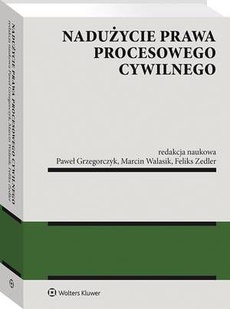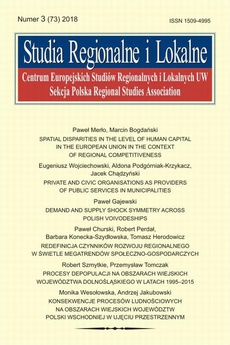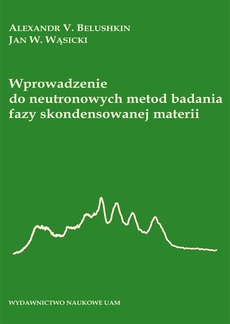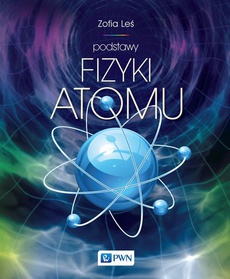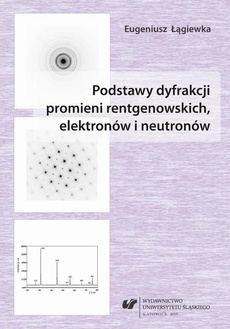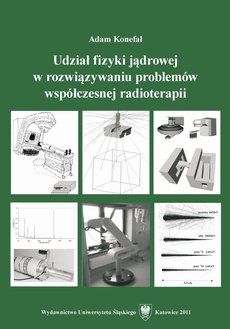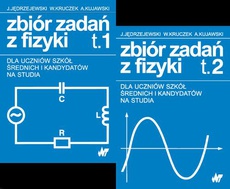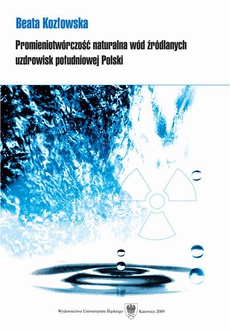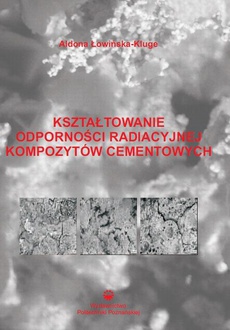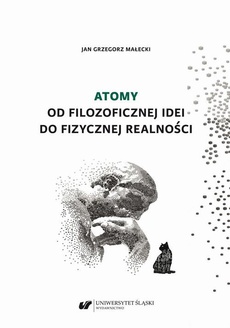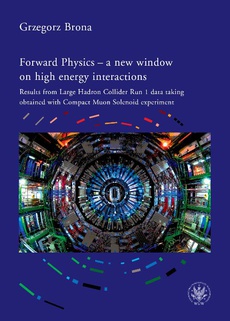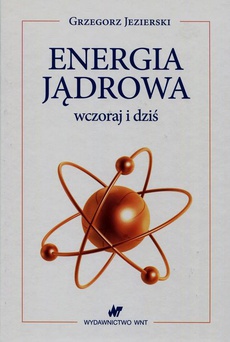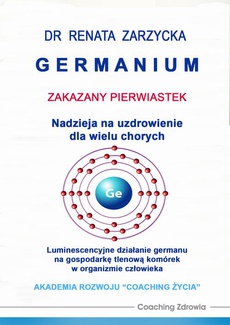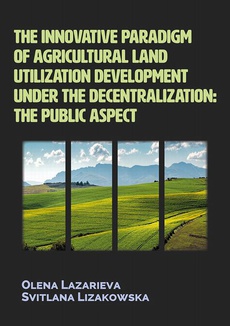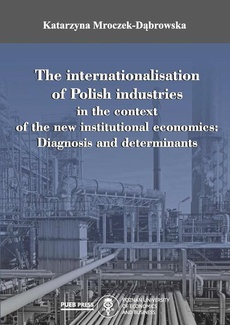INNE EBOOKI AUTORA
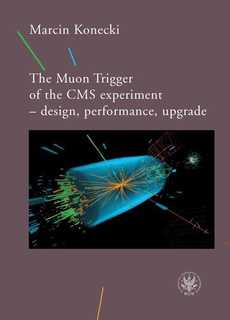
-40%
The Muon Trigger of the CMS experiment - design, performance, upgrade
Autor:
Wydawca:
Format:
pdf, ibuk
The CMS experiment has operated smoothly during the LHC Run-1 (2010–2013). A large numer of collisions, triggered by the CMS Level-1 and High-Level trigger systems allowed CMS to discover the Higgs boson and perform many important physics measurements and searches.
In this monograph the muon trigger of the CMS detector is discussed, including its design
and performance. The CMS experiment is reviewed and its initial performance and operation are emphasized. The selected main physics results are shown. The detector upgrade perspectives are also presented.
The monograph is supplemented with the performance of the PACT trigger, development studies on muon isolation and simplified track reconstruction based on the Pixel Detector.
| Rok wydania | 2014 |
|---|---|
| Liczba stron | 119 |
| Kategoria | Fizyka jądra atomowego i cząstek elementarnych |
| Wydawca | Uniwersytet Warszawski |
| ISBN-13 | 978-83-235-1678-1 |
| Numer wydania | 1 |
| Język publikacji | angielski |
| Informacja o sprzedawcy | ePWN sp. z o.o. |
POLECAMY
Ciekawe propozycje
Spis treści
| 1. The CMS experiment at the LHC—design and initial performance | 11 |
| 1.1. Introduction | 11 |
| 1.2. CMS detector | 12 |
| 1.3. CMS trigger and data acquisition system | 13 |
| 1.4. CMS operation | 15 |
| 1.5. Commissioning and initial detector performance results | 17 |
| 2. The Level-1 muon trigger. Performance | 22 |
| 2.1. Level-1 trigger | 22 |
| 2.1.1. Calorimeter trigger algorithms | 23 |
| 2.1.2. Muon trigger | 25 |
| 2.1.3. Level-1 event selection | 30 |
| 2.2. Muon trigger performance | 32 |
| 2.2.1. Level-1 muon trigger efficiency | 32 |
| 2.2.2. Level-1 muon trigger rates | 33 |
| 2.2.3. Level-1 muon trigger timing | 33 |
| 3. The muon track reconstruction at the High-Level trigger | 36 |
| 3.1. Introduction | 36 |
| 3.2. HLT operation | 36 |
| 3.3. HLT reconstruction software | 39 |
| 3.4. Basics of the muon reconstruction | 41 |
| 3.5. Track and primary-vertex reconstruction | 43 |
| 3.5.1. Seeding and pixel-based reconstruction | 43 |
| 3.5.2. Combinatorial Track Finder | 45 |
| 3.6. Muon reconstruction at the HLT | 47 |
| 3.6.1. Level-2 reconstruction | 48 |
| 3.6.2. Level-3 reconstruction | 48 |
| 3.6.3. Muon isolation | 49 |
| 3.6.4. Performance | 50 |
| 4. Selected physics results | 53 |
| 4.1. Introduction | 53 |
| 4.2. Higgs physics | 53 |
| 4.2.1. H → γγ | 54 |
| 4.2.2. H → ZZ → 4C | 55 |
| 4.2.3. H → ττ | 56 |
| 4.2.4. Combination of Higgs measurement and Higgs properties determination | 58 |
| 4.3. Vector boson production, top physics and QCD | 58 |
| 4.4. Other selected measurements | 60 |
| 4.4.1. Charged particle multiplicities and momentum spectra | 60 |
| 4.4.2. Topological correlations in two-particle distributions | 61 |
| 4.4.3. Search for rare B/Bs → µ+µ− decays | 62 |
| 4.5. Searches for new phenomena beyond the Standard Model | 63 |
| 4.6. Heavy-ion physics with CMS | 64 |
| 5. Perspective outlook and summary | 65 |
| 5,1, Introduction | 65 |
| 5.2. CMS upgrades during Phase-I | 65 |
| 5.2.1. RPC and CSC upscope in LS1 | 65 |
| 5.2.2. New Level-1 trigger | 66 |
| 5.2.3. HCAL modifications | 66 |
| 5.2.4. Pixel Detector replacements | 66 |
| 5.3. Phase-II upgrades | 67 |
| 5.4. Summary of physics results | 67 |
| 5.5. Summary of muon trigger operation and author’s contribution | 68 |
| A. The PACT for RPC system | 69 |
| A.1. Introduction | 69 |
| A.2. PACT system | 70 |
| A.2.1. Layout of the system | 70 |
| A.2.2. PAC algorithm | 71 |
| A.2.3. Segmentation and data flow | 72 |
| A.2.4. HSCP trigger | 73 |
| A.2.5. Commissioning challenges | 75 |
| A.3. PACT performance | 75 |
| A.4. Role of the RPC system in Level-1 muon trigger | 77 |
| B. Development of methods for track reconstruction, primary vertex finding and seed generation with the Pixel Detector | 79 |
| B.1. Introduction | 79 |
| B.2. Components of the reconstruction software | 80 |
| B.3. Estimate of track position uncertainties | 81 |
| B.3.1. Parametrization of hit errors | 81 |
| B.3.2. Parametrization of multiple scattering | 81 |
| B.3.3. Track bending in the longitudinal plane | 82 |
| B.4. Finding hit pairs | 82 |
| B.5. Finding hit triplets | 85 |
| B.6. Evaluation of the parameters of pixel-tracks | 88 |
| B.7. Pixel vertexing | 89 |
| B.8. Generation of seeds | 90 |
| B.8.1. Seeds from hit pairs | 91 |
| B.8.2. Seeds from hit triplets-91 | |
| B.9. Conclusions | 91 |
| C. Development of High-Level trigger algorithms for muon isolation | 92 |
| C.1. Introduction | 92 |
| C.2. Simulation | 93 |
| C.3. Isolation algorithm | 94 |
| C.3.1. Optimization of algorithms | 95 |
| C.3.2. Calorimeter isolation | 96 |
| C.3.3. Pixel isolation | 97 |
| C.3.4. Tracker isolation | 100 |
| C.4. Overall performance | 105 |
| C.4.1. Rate reduction | 105 |
| C.4.2. Signal efficiency | 107 |
| C.4.3. Algorithm timing | 108 |
| C.4.4. Discussion | 108 |
| C.5. Conclusions | 109 |
| D. Acronyms | 110 |
| Acknowledgements | 111 |
| Bibliography | 112 |

